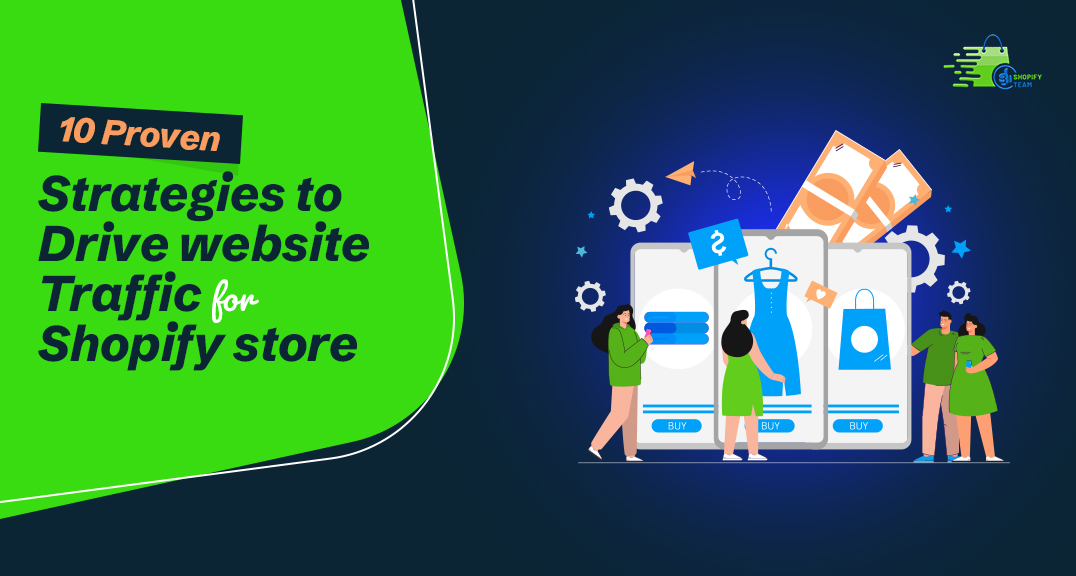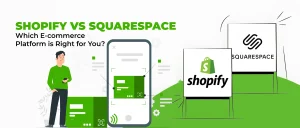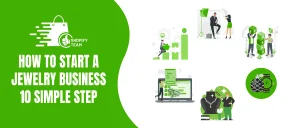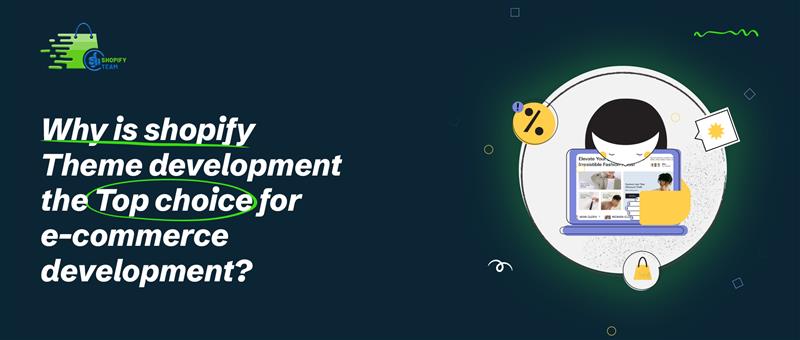The statistics projected for active Shopify stores in 2024 will be over 4.4 million all over the world. Though it’s pretty easy to create a Shopify store, its management and development, in turn, require an enormous amount of time and energy. But it has the biggest challenge for many owners: attracting traffic to the store.
How do I get more traffic to my Shopify store? is a question that each store owner asks at least once a day, and we totally understand; it’s not always straightforward, what with all the countless tactics and strategies floating around and everybody doing the same things.
Some of these methods, however, consistently show higher success rates and continue to give great results in 2024. In this post, we’ll see 10 proven strategies for your Shopify store this year, making sure you become more different from others and attract more customers through your Shopify stores.
The Importance of Driving Traffic to Your Shopify Store
To every marketer in the e-commerce world, monitoring website traffic is a necessity. Without traffic, no one comes to see your site. And with no visitors, there cannot be any customers or sales.
Traffic can never be reduced to just a number; it mirrors the interest people have in your products and services. The more the traffic, the better will be the conversion rate of visitors into paying ones which would definitely translate into higher sales and an expansion of business.
Besides selling, it creates brand awareness, develops trust with potential customers, and enables engagement opportunities. This further increases insight into the behavior of customers, providing data to fine-tune marketing strategies and optimize the store for optimal performance.
Types of Traffic Sources for Shopify Stores Search:
Paid and organic Traffic
Most customers currently prefer searching for products online and generally look them up by using a search engine such as Google, Bing, or Baidu, but not directly for specific online shops. So, to be seen, you will want to make sure your products are appearing either through a paid ad or an organic listing on the search engine.
Referral Traffic
Referral traffic is the kind of traffic that occurs when users visit your online store via linking off another website, not through a search engine. Typically, such traffic originates from third-party websites because they guide users to your site through links.
Email Traffic
Email traffic refers to the amount of website traffic generated by your email marketing programs. How effective your email traffic is will give you a pretty good sense of how engaging and relevant your emails are. If recipients click on links within the email and then go into your store, that indicates your content is interesting enough to inspire action beyond opening the email.
Social Media Traffic
Social media traffic refers to the visitors arriving on your website through various social media platforms such as Facebook, Instagram, Twitter, and many more. No matter what your case is in calculating social media ROI, you would want to know which social media sites give you the most traffic and how that traffic translates into conversion or sales.
Direct Traffic
This occurs when a user types in your website’s URL directly into his or her browser’s address bar. Such usually happens at the spot where a shopper had previously visited your website and knows its URL, thereby making navigation easier for them to come back again.
Branded Traffic
Branded traffic is people coming to your website from branded search because they have searched for your brand or your product name in a search engine. So that could be the person searching for “Nike shoes” or “Nike jackets.” There may be many other reasons that could make branded traffic more likely to convert into sales.
Paid Advertising Traffic
The most effective medium to bring traffic to your Shopify website is paid advertising. According to Sixads research, Facebook Ads, Google Ads, Instagram Ads, and Pinterest Ads are the top sources of e-commerce website traffic. These can be used to target a specific audience and drive more targeted conversion-oriented traffic to your online store.
Reasons Why Your Shopify Store Traffic is Low
That is unlucky because if the above challenges have not only occurred to you but also hit your Shopify store business plan in a way that you flopped in the aspect of bringing traffic to your site, then you would appreciate it better.
It may begin with no defined target audience. Lack of understanding about who your customers are makes it impossible to have cohesive content and marketing efforts. Define demographics, behaviors, psychological traits, and needs of the target audience for effective marketing strategies that convert visitors into customers and drive traffic.
Low-Quality Images
These low-quality images and videos will only damage the credibility of your store and harm the professional look at your store. In such a competitive e-commerce scenario, providing high-quality visuals will engage potential customers in shopping experiences. It will help to take your store above the rest and increase trust with visitors to drive more traffic.
Lame or Boring Content
Of course, content is king when it comes to attracting and retaining customers. Unless your content provides real value, it will not attract visitors and may also fail to motivate them to come back. To retain your customers and encourage repeat visits, ensure that your content is high-quality, relevant, and persuasive to your target audience. Content that meets the needs of potential buyers can help increase your traffic as well as the conversion rates significantly.
Absence of social media Links
Frankly, if your Shopify store lacks clearly visible links to your social media profiles, then you could be missing out on a lot of customer interactions with your brand. In fact, most shoppers seek to reach brands via social media with questions or simply just to know more about some products. In such cases, if a customer cannot find the social media profiles, the sale will be left, or perhaps they will leave the site for another one. Adding social media icons which hyperlink to your actual profiles and keeping those channels active with informational updates is a great way to boost engagement and traffic.
Incomplete Key Information Pages
A store that does not include the necessary information pages such as About Us, Contact Us, Privacy Policy, and Terms of Service will make customers think that your store is not professional and does not inspire trust. Generally, informational pages like these create the greatest amount of credibility and transparency that are going to affect the customer’s confidence and your ability to generate traffic in your store. So, always add all the required informational pages of a Shopify store to make your business appear reliable and trustworthy.
Lack of Promotions and Special Offers
Promotions, discounts, and special offers are good incentives for coming into the store. Consumers often rush to make purchases when offered time-sensitive offers, seasonal offers, or unique discounts, which create a time-sensitive urge to respond. Introducing attractive promotions and offers on a regular basis will not only promote traffic to the store but also create customer loyalty and repeat business.
The abovementioned common pitfalls will be addressed; it will improve your performance a great deal, attracting visitors who eventually benefit your business.
10+ Ways to Drive Traffic to Your Shopify Store
There are two primary ways to drive more traffic to your Shopify store: short-term strategies and long-term strategies. The former are quicker results bringers but typically require more energy and resources in the long run. Long-term strategies might take much longer before noticeable returns can be seen; however, they typically require less frequent maintenance once established.
First, estimate the benefits and costs of each tactic. Among these estimated ones, ROI, effort, cost, and potential for traffic will be considered prior to implementing any strategy. We have categorized each tactic below in an effort to make this process easier for you.
Use Social Media Platforms
The perfect challenge social media today offers in a hyper-connected world is the engagement of potential customers through emphasis on your brand’s unique personality. Posting product images and awaiting results is not enough, however. For one to properly leverage social media, he needs content that engages his audience.
Here are several effective ways that will boost your social media engagement:
Content That Converts: Sure! Here’s a revised version of your content:
Focus on sharing content that resonates with your target audience. Instead of posting random updates, think about what will genuinely engage your customers. For example, consider showcasing behind-the-scenes looks at your production process or offering useful tips related to your niche. By prioritizing authenticity and maintaining consistency, you’ll be able to effectively drive more traffic to your Shopify store.
Interact With Your Organic Followers:
Social media is all about engagement! Foster conversations by asking questions, responding quickly to comments and messages, and tagging relevant people or brands in your posts. Focus on adding value by sharing helpful insights, not just sales pitches. If you address customer concerns or offer useful tips, you build trust and encourage sharing. Take a page from Dumbclub’s playbook—through consistent interaction and customer involvement, they generated millions of tags on TikTok and Instagram, boosting their visibility and engagement.
Invite Your Customers:
If your page doesn’t have many followers yet, don’t worry—start by asking your family and close friends to share your website on their profiles. These are the people who care about you and are often happy to help out just out of kindness.
Rather than asking them to buy your products, simply having them share your store with their network can be incredibly valuable. In fact, studies show that 92% of shoppers trust recommendations from people they know more than traditional ads.
Tip: Personalize your request for each person to keep it genuine and avoid sounding like spam. And always remember to thank them sincerely for supporting your business and helping spread the word!
Make Followers Ambassadors:
Your current followers can be key partners in expanding your reach. Try running contests or giveaways that encourage sharing. This not only boosts your visibility but also generates excitement around your brand. Research shows that 54.4% of people will share a promotion on at least one social media platform, helping to spread the word.
You can also consider launching a loyalty or referral program to incentivize repeat purchases and attract new customers.
When it comes to driving traffic, Facebook is the top platform for Shopify stores, with nearly two-thirds of social media traffic coming from there. In fact, a remarkable 85% of all social media-driven sales happen on Facebook!
SEO (Search Engine Optimization)
While social media can deliver quick traffic to your Shopify store, search engine optimization (SEO) is a long-term strategy that ensures a steady flow of visitors over time. The key to SEO success is understanding your customers’ interests, knowing what they’re searching for, and optimizing your store to appear in those search results.
Keyword Research: The Foundation of SEO
Start by thinking like your customers. What terms would they use to find products like yours? Pay special attention to long-tail keywords (3–5 words) that cater to niche audiences. Tools like Google’s Keyword Planner or SEMrush can help you identify relevant keywords with solid search volume. Once you have a list of target keywords, seamlessly incorporate them into your product descriptions, page titles, and meta descriptions to boost visibility.
Content: More Than Just Product Descriptions
To take your SEO to the next level, consider starting a blog on your Shopify store. This gives you the chance to create valuable, in-depth content around topics related to your products, positioning your brand as an expert in your niche. For example, if you sell kitchen appliances, you could write articles on cooking tips, recipes, or the latest food trends. Not only does this improve your SEO, but it also provides valuable information that builds trust with potential customers.
Mix up your content formats—think blog posts, videos, podcasts, social media posts, and eBooks. This keeps your audience engaged and excited about your brand. To maximize traffic, stay ahead of the curve by using trending keywords. Use tools like Ahrefs or Google Trends to identify what questions your customers are asking and be the first to create content around those topics!
Backlinking & Internal Linking: Boost Your SEO
Linking to reputable websites is an essential SEO strategy. When you link to trusted sources, Google sees your site as more credible. But don’t focus only on external backlinks! Internal linking is just as important. Organizing your site’s structure with relevant internal links helps Google crawl your site more efficiently, improving your search rankings and making it easier for visitors to navigate.
Search Intent:
Google’s primary focus is understanding what users are looking for when they search—this is known as search intent. It refers to the purpose behind a user’s query. For example, if someone is looking to start a streetwear brand, they would prefer an article that outlines the steps to do so, rather than a general overview on the topic. While quality content, the right keywords, and backlinks are all important for driving traffic to your Shopify store, they won’t have much impact if your website doesn’t align with what users are actually searching for.
Paid Advertising
While organic strategies are essential for long-term growth, sometimes you need a quick traffic boost. That’s where paid advertising comes in. Platforms like Google Ads, Facebook Ads, Instagram Ads, Pinterest Ads, and TikTok Ads allow you to showcase your products to a targeted audience who is likely interested in what you’re selling.
Targeting the Right Audience
While organic strategies are essential for long-term growth, sometimes you need a faster way to drive traffic to your Shopify store. That’s where paid advertising can make a significant impact. Platforms like Google Ads, Facebook Ads, Instagram Ads, Pinterest Ads, and TikTok Ads offer powerful ways to put your products in front of potential customers who are likely to be interested in what you’re selling.
With billions of active users on social media platforms, paid ads can drive traffic to your Shopify store fast and help boost sales. Just remember to switch your social media account to a business profile before running your ad campaigns!
Collaborate and Connect: Unlocking the Power of Partnerships
In the world of e-commerce, collaboration can be a game-changer. Partnering with other businesses or influencers not only helps expand your reach but also builds trust and credibility for your brand. Whether through influencer marketing or cross-promotions with complementary brands, working together can amplify your brand’s visibility and drive traffic to your Shopify store.
Influencer Partnerships: Harnessing the Power of Trusted Voices
Influencer marketing has become one of the most effective ways to boost traffic and sales for online businesses. The key to success lies in choosing the right influencers—those whose followers align with your target demographic. Interestingly, micro-influencers, with their smaller but highly engaged audiences, often provide a better return on investment (ROI) than celebrities with millions of followers.
When collaborating with influencers, focus on genuine, authentic partnerships. Allow influencers to promote your products in their own style, rather than simply pushing a hard sell. This creates a more organic connection with their audience, making it more likely they’ll visit your Shopify store and make a purchase.
Here are a few ways to collaborate with influencers:
Offer Free Samples: Many smaller influencers are open to receiving free products in exchange for posting about them. If they genuinely enjoy your product, they will enthusiastically recommend it to their followers, which can drive traffic and awareness.
Sponsored Posts: One of the most common influencer marketing tactics, sponsored posts involve paying influencers to create content about your product. They might showcase your product in a post, story, or reel, often tagging it with #ad to comply with advertising guidelines. Sponsored content is an effective way to put your brand in front of an engaged audience.
Collaborative Blog Posts: Statistics show that 77% of internet users engage with blogs regularly. By featuring an influencer’s expert advice or product recommendations in a blog post, you can create valuable content that resonates with your audience. The influencer is likely to share the post with their followers, driving additional traffic to your Shopify store.
Social Media Takeovers: Another creative way to partner with influencers is by giving them control of your social media accounts for a day. A takeover allows the influencer to engage directly with your followers and brings their audience to your page, increasing visibility and engagement.
You can reach out to influencers directly through their social media profiles or use influencer marketing platforms like Influencer Marketing Hub to find the right fit. Be sure to select influencers whose audience aligns closely with your brand and product offerings for maximum impact.
Cross-Promotions with Complementary Brands: Growing Together
In addition to influencer collaborations, partnering with complementary brands can be a powerful way to increase exposure. Look for businesses that serve the same audience but offer different products. For example, if you sell yoga mats, you might consider partnering with a brand that sells activewear, fitness accessories, or health supplements.
With cross-promotion, you can create joint campaigns, bundle offers or simply promote each other on social media. This allows you to tap into each other’s customer base and drive traffic to both Shopify stores. By collaborating with non-competing businesses, you can reach new potential customers without directly competing for the same market share.
The Power of Email Marketing to Drive Repeat Visits
While attracting new visitors to your store is essential, don’t overlook the impact of email marketing in re-engaging previous visitors. Email allows you to nurture long-term relationships with your customers, keeping your brand in their minds and encouraging them to return for repeat visits and purchases.
Building Your Email List
Start by offering something of value in exchange for email sign-ups. This could be a discount on their first purchase, exclusive access to special content, or early-bird notifications about new products. Be strategic about where you place sign-up forms on your site—ensure they’re visible but not intrusive to the user experience.
Crafting Emails That Drive Traffic
To truly drive traffic back to your Shopify store, focus on delivering value—not just promotional content. Balance product offers helpful tips, behind-the-scenes glimpses, or customer success stories. Personalizing your emails based on customer behavior or preferences will lead to higher engagement. And of course, always include clear calls-to-action (CTAs) that encourage readers to visit your store and make a purchase.
The Ongoing Effort of Driving Traffic
Building traffic to your Shopify store is an ongoing process that requires both patience and testing. What works for one store may not work for another, so be sure to regularly assess your results and adjust your strategies as needed. Consistency, along with a commitment to refining your approach, will help boost both visibility and customer engagement.
Referral Program
Word of mouth is the best marketing tool. Implement a referral program to get your existing customer to refer new buyers to your store.
Offer incentives – Give discount coupons, credit at the store, exclusive products, or whatever you have that can be offered for referring someone to your store. Make sharing via social media or email easy.
Content Marketing & Blogging
Content marketing is a brilliant way to get organic traffic, earn authority, and educate your audience.
Blogging: Use your website for blogging and keep it fresh with information that many of your customers may be searching for, such as answers to frequently asked questions, use cases, and news in the industry. Optimize these for SEO to increase your rankings.
Video Content Creation: Make use of YouTube and TikTok, etc., for more engaging video content about your products, tutorials, unboxing, or lifestyle content regarding your brand.
User-Generated Content (UGC)
UGC is a sort of trust and community engagement that can drive traffic.
Contest or Giveaway: You could ask your customers to take a photo or video of your product to win a prize. This will essentially drive the engagement and give you rich content for marketing campaigns.
Mobile Optimization
Optimize your store to meet mobile visitors’ requirements. A smooth mobile experience drives higher conversion rates and revisit stores.
Mobile-Friendly Design: A responsive Shopify theme that looks great on any device. Ensure your store loads quickly, checkout is easy, and product pages are easy to navigate on mobile.
Host Webinars or Live Streams
With direct engagement through webinars or live streams, you might connect more intimately with your audience and even drive traffic.
Live Product Demonstrations: Showcase your products in action, responding to queries, and providing an exclusive discount to the viewers.
Industry-Specific Webinars: Host webinars of education on your niche-related pain points to promote your store as the resource and receive indirect endorsements for your products.
Shopify Apps
Shopify offers a plethora of apps that could help you increase traffic-from email marketing tools to referral programs.
In the review app section, you can include Yotpo or Judge.me to gather and post reviews. This will help build trust and also enhance your SEO.
In the pop-up and exit intent offers section of the apps, you may use Privy, OptiMonk, or other similar apps to encourage visitors from leaving your website.
Conversion Optimization: Bonus Tip
The more traffic the store gets, the better, but ultimately that traffic needs to be converted into sales. Your store needs to be conversion optimized, not just pictures of great products and pretty clear CTAs, but an easy secure checkout process.
Using all these strategies combined will drive more traffic to the Shopify store and create a loyal customer base, bringing in people who love shopping at the store.
Conclusion
Driving traffic to your Shopify store may seem challenging, but with the right tactics and tools, you can see significant results. By combining organic and paid strategies, focusing on delivering customer value, and staying consistent with your marketing efforts, you can increase both traffic and conversion rates.
Start implementing these strategies today to enhance your customers’ shopping experience and watch your revenue and brand awareness grow.










